Blending amateur literary criticism, semi-pop psychology, and painful personal experience, this is a podcast about tackling the big questions in children’s literature:
- Is the Very Hungry Caterpillar an anti-hero?
- Did Dr. Seuss rip off Dr. Freud?
- What should you say when your wife catches you hiding Pat the Bunny under the couch for fear of having to read it for the 5th time in a row?
Subscribe to the podcast here:
Featured Books
Season 2 | Spring 2019
Check out the six books featured in Season 2 of the podcast.
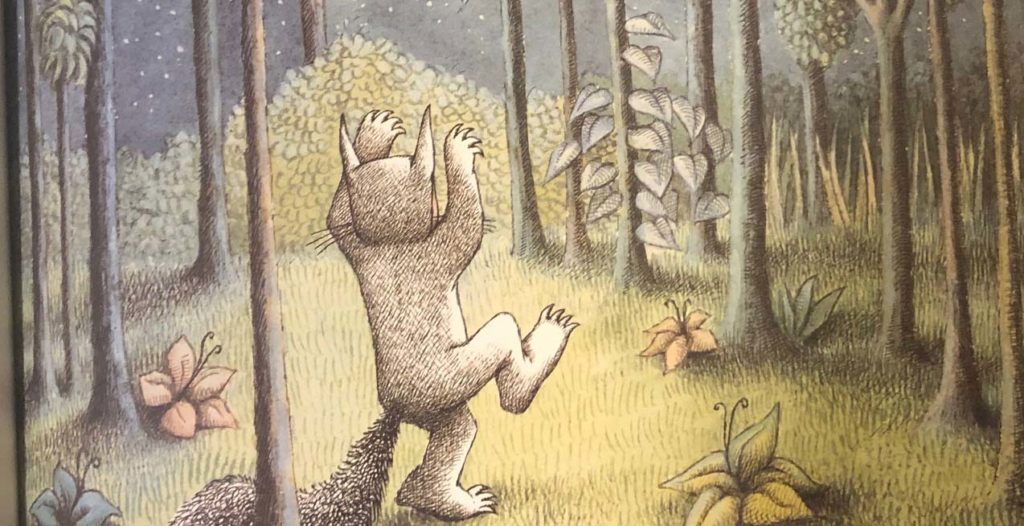
Where the Wild Things Are
By Maurice Sendak
[podcast_episode episode=”835″ content=”player”]
Why We Picked It
- This was a chance to talk about how kids process loneliness/anger/fear through imaginative escape.
- It seems impossible to do a podcast on children’s books without getting swept up into The Wild Rumpus.
What Else?
“Children surviving childhood is my obsessive theme and my life’s concern.” —Maurice Sendak.
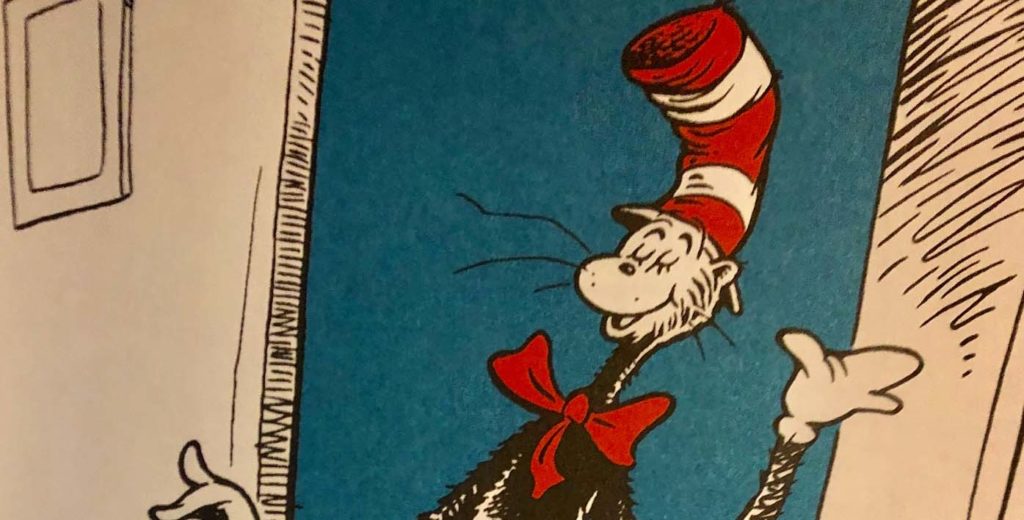
The Cat in the Hat
By Dr. Seuss
[podcast_episode episode=”841″ content=”player”]
Why We Picked It
- If we want to talk about children’s books from the perspective of a psychologist and a book editor, we have to talk about this one. It changed our models for approaching children’s literature and childhood development, and it happened at the apex early literacy point of the baby boom generation.
- Nick gets a chance to go full Freudian.
What Else?
“Children catch on more quickly when you’re doing sloppy writing than adults do. They just walk away. Kids are a much more demanding audience, because they don’t have to be polite.” —Dr. Seuss
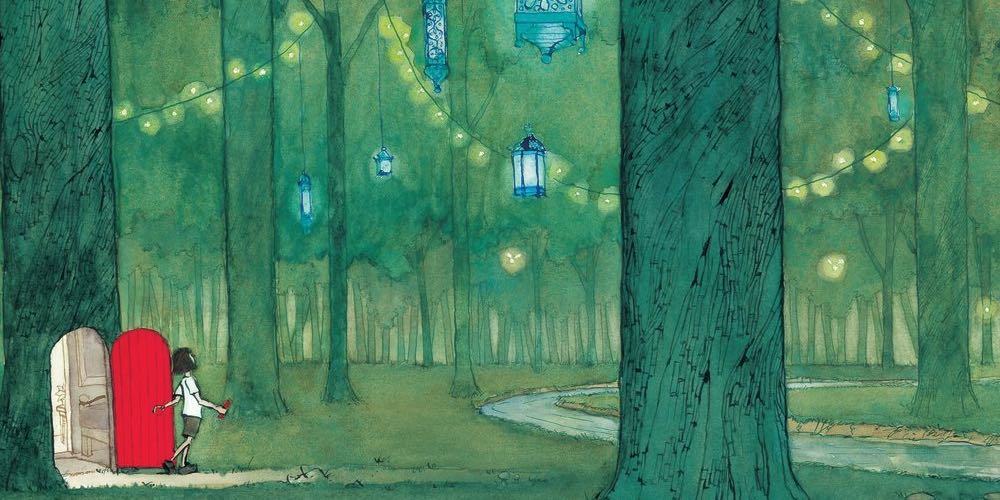
Journey
By Aaron Becker
[podcast_episode episode=”844″ content=”player”]
Why We Picked It
- It’s one of the loveliest ways to show how a story can be told without words.
- We wanted a chance to feature Elena and Jack on a “poddycast.”
What Else?
- This interview on how Journey was made
- Further reading: Harold and The Purple Crayon, Good Dog, Carl, Grandfather Twilight.
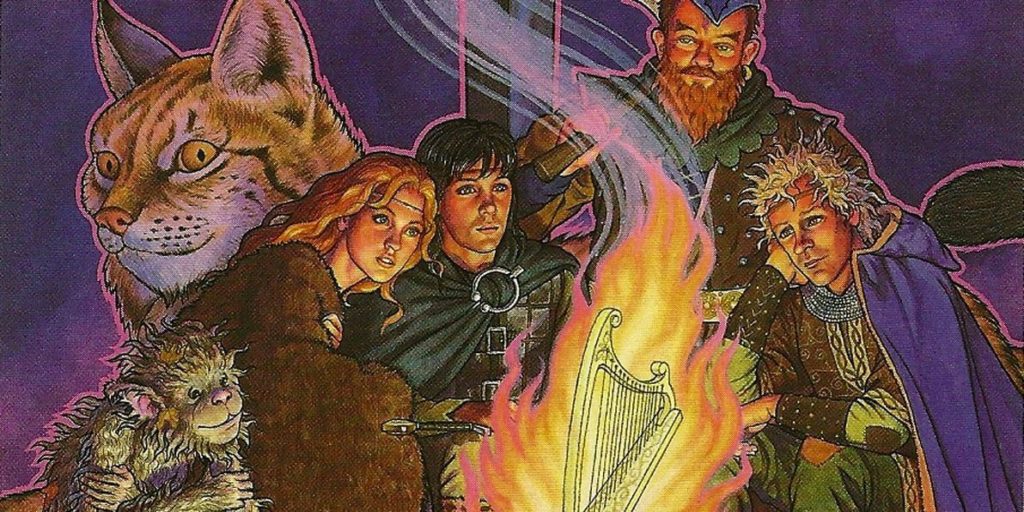
The Chronicles of Prydain
By Lloyd Alexander
[podcast_episode episode=”845″ content=”player”]
Why We Picked It
- This is not just a bunch of coming of age books, but a coming of age series that is explicitly about the opportunity cost of making adult decisions and the complicated obligations of self-sacrifice.
- Talking about these books has been an important part of our friendship, and its a neglected niche of the YA Fantasy Canon, and a worthwhile layover for travelers returning home from Narnia or Middle-Earth.
What Else?
“While extending the story, I have also tried to deepen it. If a darker thread runs through the high spirits, it is because the happenings are of serious import not only to the land of Prydain but to Taran, The Assistant Pig-Keeper, himself… Even in a fantasy realm, growing up is accomplished not without cost.” —Lloyd Alexander
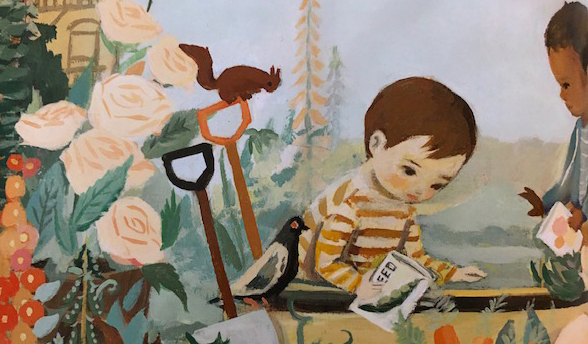
The Wonderful Things You Will Be
By Emily Winfield Martin
[podcast_episode episode=”846″ content=”player”]
Why We Picked It
- We appreciated the kindly recommendation from the folks at TreeHouse Books.
- We love kids books where the text is phrased such that it’s you the parent speaking directly to your kid. We don’t want to squander the gift of a book that can encourage a parent to say something like “When I look at you and you look at me, I wonder what wonderful things you will be.”
What Else?
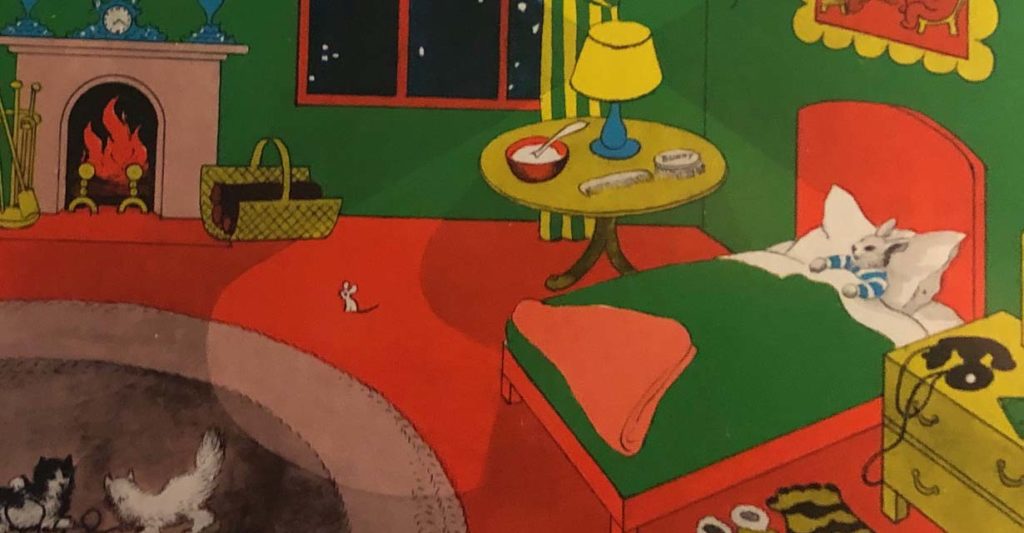
Goodnight Moon
By Margaret Wise Brown | Illustrated by Clement Hurd
[podcast_episode episode=”847″ content=”player”]
Why We Picked It
- We thought that one of the most soothing goodnight books was the right opportunity to talk about why books are part of a bedtime ritual in the first place.
- It’s a platform to mention this takedown of the Goodnight Moon bedroom interior design aesthetic.
What Else?
“I finish the rough draft in 20 minutes, and then I spend two years polishing.” —Margaret Wise Brown
Featured Books
Season 1 | Fall 2018
Check out the six books featured in Season 1 of the podcast.
Caps for Sale — We’re Going on a Bear Hunt — Cars and Trucks and Things That Go — Our Animal Friends at Maple Hill Farm — Pat the Bunny — The Little Prince
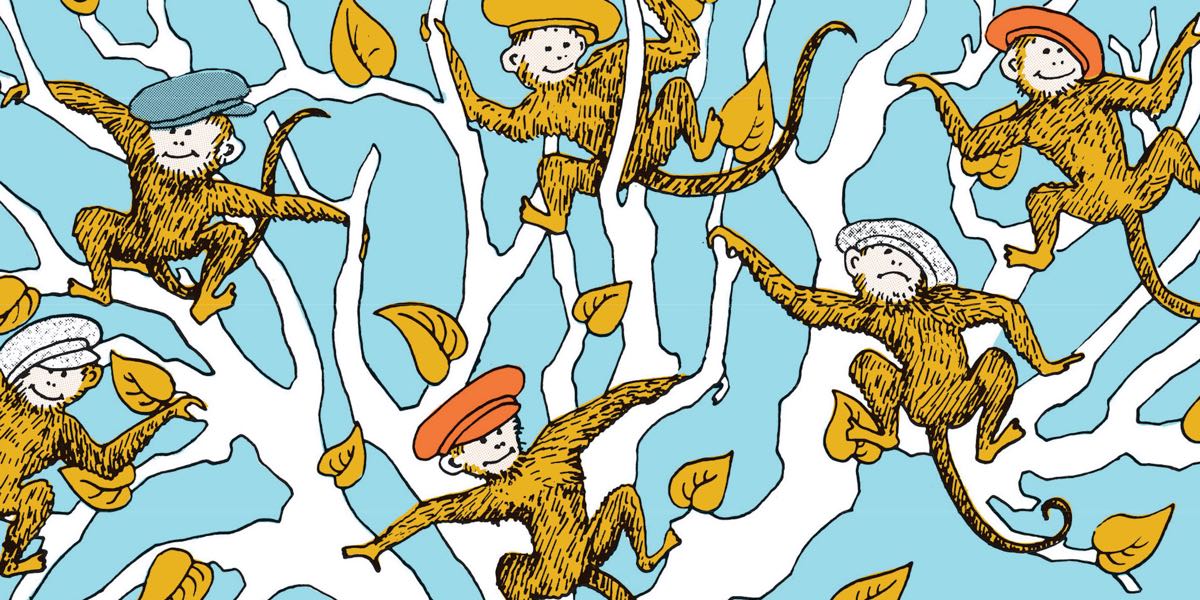
Caps for Sale
Written & Illustrated by Esphyr Slobodkina
[podcast_episode episode=”616″ content=”player”]
Why We Picked It
- Performing the monkeys’ “tsz, tsz, tsz” fist-shaking has proven a delight for everybody involved.
- The strange dream logic of the action’s resolution, in which the peddler’s anger both is and isn’t the cause of him getting his caps back, makes pinning down the story’s moral a fascinating exercise.
A Little Bit of Background
- The author of the book, Esphyr Slobodkina, was born in Siberia and spent her childhood in China before moving to the United States.
- As an art student in New York City, she became friends with Margaret Wise Brown (author of Goodnight Moon), and illustrated some of her books before she was encouraged to write her own.
- Caps for Sale was published in 1940 but is thought to be based on a late 18th Century folktale.
The verbal patterns and the patterns of behavior we present to children in these lighthearted confections are likely to influence them for the rest of their lives. These aesthetic impressions, just like the moral teachings of early childhood, remain indelible.
—Esphyr Slobodkina on children’s books
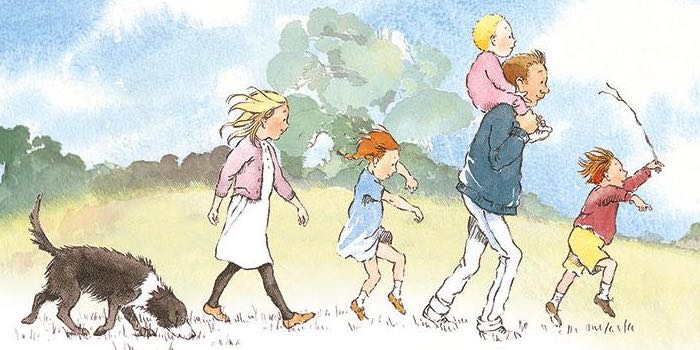
We’re Going on a Bear Hunt
Written by Michael Rosen | Illustrated by Helen Oxenbury
[podcast_episode episode=”617″ content=”player”]
Why We Picked It
- Everyone seems to love it, but everyone seems to read it with a different rhythm, especially for the onomatopoeic obstacles.
- Most adventures in children’s books feature a pretty madcap plan, but even by those standards, this bear-hunting expedition is exceptionally poorly-equipped and ill-advised.
A Little Bit of Background
- Contrary to popular belief, there are no parents in the book—all the characters are children.
- According to Helen Oxenbury: “I first heard the story when the Scottish folk singer Alison McMorland recorded a traditional song about a bear hunt and asked me to design the record cover. By coincidence, Michael Rosen and his editor knew the song, too, realised it would make a good children’s story and, without knowing about my record cover, asked if I’d do the illustrations.”
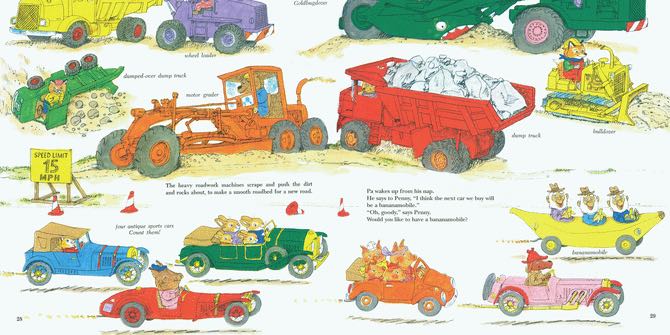
Cars and Trucks and Things That Go
By Richard Scarry
[podcast_episode episode=”644″ content=”player”]
Why We Picked It
- This book has accumulated more hours read than any other book for us… by far!
- This book has a lot of “texture.” From multiple story lines and recurring characters to the many “min-stories” present on each page, it’s fascinating to watch how our kids interact with such a multifaceted story.
A Little Bit of Background
- The Art of Richard Scary
- 12 Busy Facts About Richard Scarry
- A visual comparrison showing how Richard Scarry’s books were edited to be more progressive and inclusive over time.
Wherever I go I’m watching. Even on vacation when I’m in an airport or a railroad station, I look around, snap pictures and find out how people do things. Someday it will all show up in a book.
—Richard Scarry
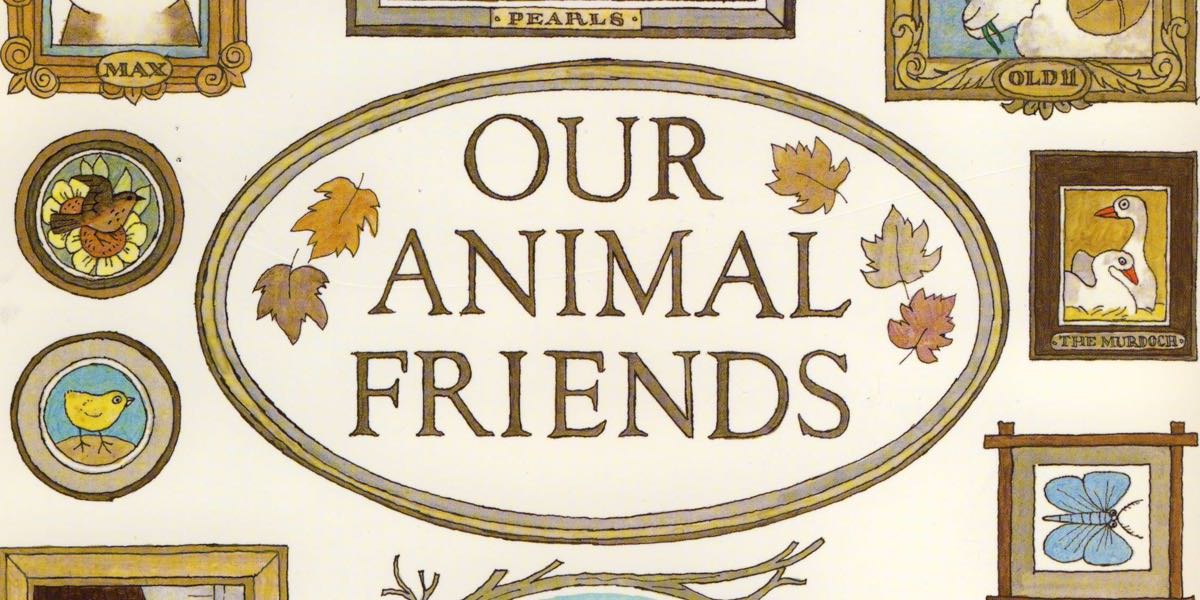
Our Animal Friends at Maple Hill Farm
By Alice & Martin Provensen
[podcast_episode episode=”650″ content=”player”]
Why We Picked It
- The best children’s book Ben has discovered as a parent.
- The tone of the book manages to suggest both detachment and deep emotional investment, but there is no doubt about the gleeful abandon with which the authors named the various animal friends in a way that defies categorization or expectation, from Other Hen to Old Eleven to Ibn Rafferty (a horse also nicknamed Big White Pill) to Sam.
A Little Bit of Background
- The Provensens were a husband and wife team who illustrated over 40 books together. In 1950, the couple bought an abandoned farm where they worked at large drawing tables placed back-to-back in the barn. They won the Caldecott for Glorious Flight Across the Channel with Louis Bleriot.
- Martin also designed Tony the Tiger.
I saw a child’s picture, a country landscape. It had fifteen trees that looked like lollipops, both a sun and a moon in the sky and a crazy river running through. It wasn’t very realistic, but it was a miracle of design. … And when children draw people or portraits of themselves, even if they are only stick figures, they have an animate quality that a professional rarely gets.
—Alice Provensen on drawings done by children
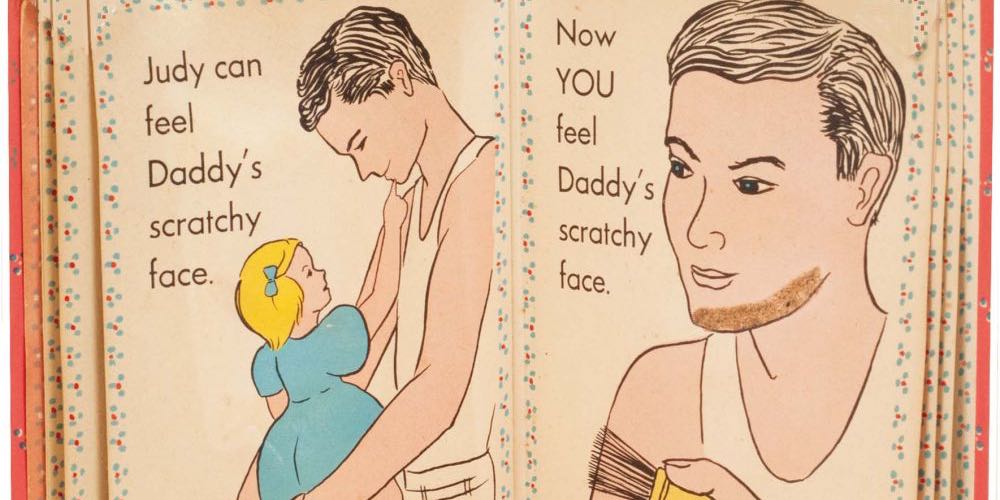
Pat the Bunny
By Dorothy Kunhardt
[podcast_episode episode=”651″ content=”player”]
Why We Picked It
- Nick’s daughter loves this book. He hates it. Something’s gotta give…
- It’s a good touchstone for the topic of classics in children’s literature. Is the genre old enough to have “classics”? What makes a children’s book classic?
A Little Bit of Background
- Pat the Bunny is the 6th bestselling hardcover children’s book of all time.
- Each year, the production of Pat the Bunny books apparently uses up “acres of sandpaper beard, six football fields of peekaboo cloth and enough metalized polyester to mirror over a small lake.”
- A first edition copy of Pat the Bunny will set you back $5,500.
For Dorothy Kunhardt a children’s book was nothing more or less than a way to talk to children.
—Philip B. Kunhardt Jr. (author’s son)
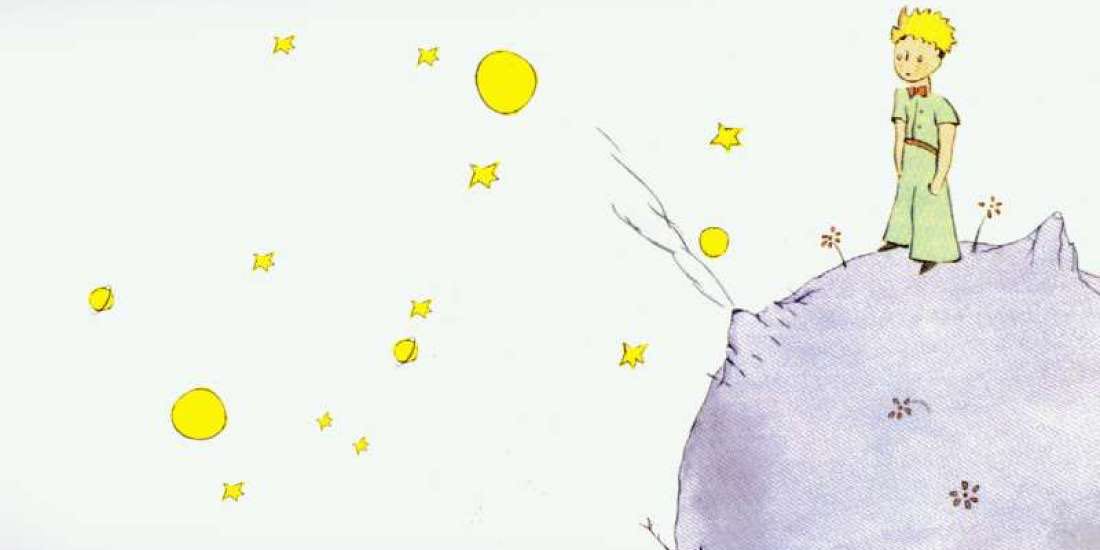
The Little Prince
By Antoine de Saint-Exupéry
[podcast_episode episode=”652″ content=”player”]
Why We Picked It
- A book that one can learn to love even more deeply as one grows up with it, in spite of (or perhaps because of) how critical the book is of grown-ups.
- The book begins with grown-ups failing to understand the truths of an illustrated story that a child has drawn for them.
- A rare literary success in which the idealism of the narrative doesn’t seem too diminished by its tragic elements or cheapened by its popular appeal.
A Little Bit of Background
- The author, a famous aviator, disappeared in a reconnaissance mission over the Mediterranean in 1944.
- Over 140 million copies sold — one of the best selling books ever published.
There is a cheap literature that speaks to us of the need of escape. It is true that when we travel we are in search of distance. But distance is not to be found. It melts away. And escape has never led anywhere. The moment a man finds that he must play the races, go the Arctic, or make war in order to feel himself alive, that man has begin to spin the strands that bind him to other men and to the world. But what wretched strands! A civilization that is really strong fills man to the brim, though he never stir. What are we worth when motionless, is the question.
—Antoine de Saint-Exupéry
Interested?
Join the monthly newsletter and get updates when new seasons and episodes of the podcast are released.

